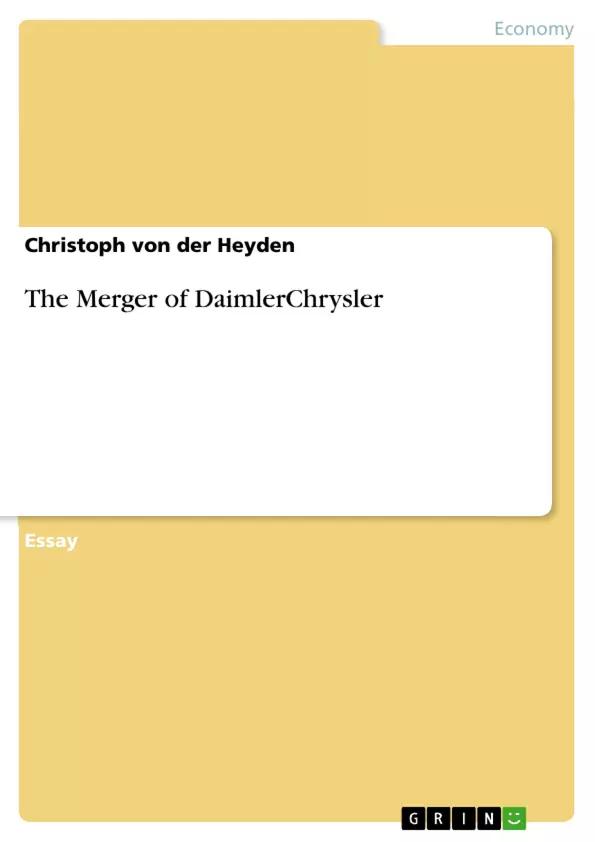The merger between the two partners -Daimler-Benz and Chrysler- is not only a merger of the brands
Mercedes-Benz and Chrysler. In the histories of the two partners there have been many other mergers
and both companies also have been busy in fields which have not got directly anything to do with cars.
At the time of the merger in 1998 the two companies already included several car-makes which they
had acquired in the course of time.
Because of the interesting history of the two partners I put more weight on this point to make clear how
exactly it came to the corporate group today.
Bientôt vous trouverez ici un extrait.
Fin de l'extrait de 16 pages
- haut de page
- Citation du texte
- Dipl.-Kfm. (FH) Christoph von der Heyden (Auteur), 2004, The Merger of DaimlerChrysler, Munich, GRIN Verlag, https://www.grin.com/document/145652
Lire l'ebook



